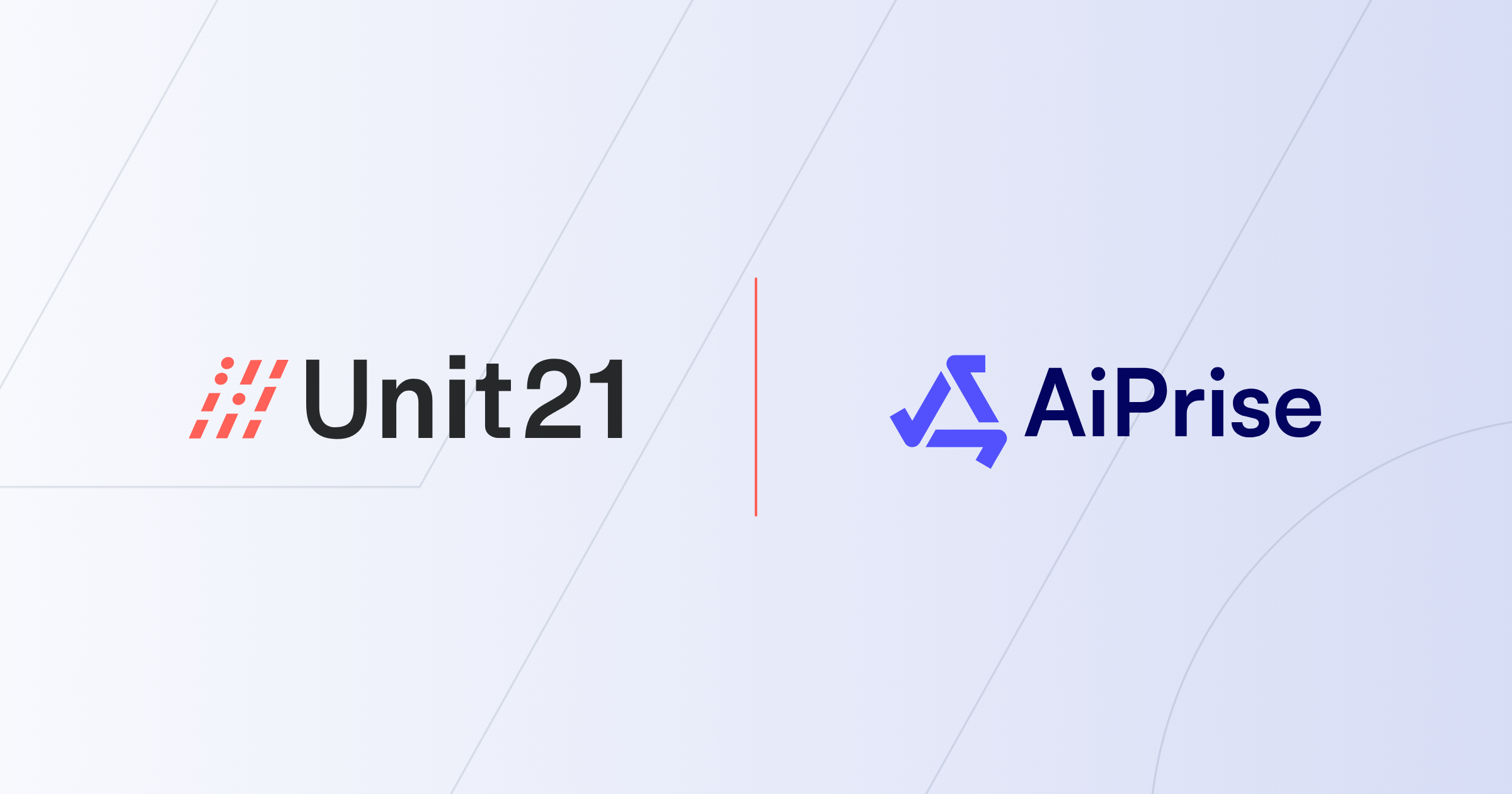

Since 2018, Unit21 has empowered fintech and financial institutions to detect fraud more accurately. On a mission to stop bad actors and deliver justice, Unit21 enables your teams to combat financial crime and make informed decisions. Configurable to your unique risk profile, Unit21 unifies data silos into a comprehensive solution for monitoring and managing cases.
In this Fraud 101 guide, we'll explore how Unit21 stands out in the fight against financial crime. Whether you’re looking for a fraud solution, an AML solution, or both, Unit21 has a single platform for transaction monitoring, real-time monitoring, case management, fraud, and consortium data.
Size of the Fraud Problem
Fraud is constantly growing. In 2023, the FTC received 2.6 million fraud reports and reported over $10 billion in fraud losses. The most prevalent reports were identity theft and imposter scams. Fraud of all types is trending across all payment rails, whether ACH, checks, real-time payments, or peer-to-peer transactions.
Fraud Detection and Prevention Methods: How Is Unit21 Different?
Unit21 offers a range of innovative features designed to enhance your fraud detection methods and fraud prevention methods. These include:
Real-Time Monitoring
Unit21’s core offering is real-time monitoring, which allows you to receive immediate responses. Clients can ingest any data into a central place to streamline bank fraud investigations. Analysts get immediate notifications and can block suspicious transactions before they are authorized. This allows you to visualize all your ingested user data in one place for a 360-degree view of user activities.
Reducing False Positives
Unit21 allows you to create, test, and access historical data and launch new rules within minutes, whether in production or shadow mode. You can also quickly iterate on and test rules without vendor assistance. The reaction cycle is fundamental to your financial crime unit. The speed and quality of your reaction turn fraud detection methods into fraud prevention. Machine Learning aids alert prioritization, reduces investigation time, and prevents backlogs, which reduces false positives.
Investigation and Recovery
All the relevant data is available to the analyst for conducting their investigations and efficiently creating and handling cases. Unit21 aggregates data in a dashboard with visualizations for monitoring and allows users to modify alerts and rules as fraud vectors are detected instantly. You can review transactional data, alerts, and users to conduct fraud investigations and aid in loss recovery.
Taking Fraud from Detection to Prevention
All the relevant data is available to the analyst to conduct their investigations and efficiently create and handle cases. Unit21 aggregates data in a dashboard with visualizations for monitoring and allows users to modify alerts and rules as fraud vectors are detected instantly. You can review transactional data, alerts, and users to conduct fraud investigations and aid in loss recovery.
Taking Fraud from Detection to Prevention
Unit21’s automation capabilities allow you to turn unnecessary friction into a positive customer experience. You can connect automatic actions or events via webhooks from Unit21 to your backend system. You can quickly write, test, and deploy rules within minutes whether you have historical data or not. You can allow list good customers to operate with less friction by utilizing different capabilities of the rules and alerts. In the same way, you can create watch lists for bad users or bad devices.
Real-Time Evaluation and Response
You can automatically block or approve events under 250 milliseconds or hold them for manual review. Both transaction and action events can be evaluated in real-time. Unit21 allows you to respond to fraud faster without constant engineering support. Use out-of-the-box rules or create your own and validate them on historical data prior to deployment. This minimizes the risk of flagging legitimate transactions to cut down on false positives and lower operational costs.
Comprehensive Fraud Prevention Strategies
Your fraud prevention methods and efforts begin with onboarding but don't end there. Financial institutions spearheading the fight against fraud have one thing in common: They fully utilize all their available data and ensure they see the full 360-degree view of all their users.
Looking Under the Hood of Unit21
When creating new rules, several choices are available depending on the needs and sophistication required.
Scenario Rules
Scenario rules are pre-built so you can immediately use and deploy them. These out-of-the-box rules are pre-built so you can immediately use and deploy them. There are several categories to make it easy for you to search and find what you're looking for. You can create and manage different watch lists to use with the rules. Plus, the fraud consortium holds more than 60 financial institutions and almost 40 million US entities.
There are rules on statistics and cardinality, which focus more on velocity and allow you to deploy different rules that will alert you to suspicious or out-of-pattern activity that might indicate a high risk for specific users. There are also dedicated rules to address check fraud, whether it's how the check is being deposited, the check is out of range, the check number is missing, or it's duplicate.
Within scenario rules, there are graph-based rules, which are visual representations of entities with some correlation. For example, you could create an alert whenever four or more users share the same geolocation, an IP address, or a client fingerprint. It’s extremely flexible and allows you to identify potential fraudulent behavior quickly. Relevant data is also provided to help you analyze and understand if you’re looking at a potential fraud ring or just users with correlated data elements.
Dynamic Rules
Sometimes, you need to be sophisticated with the rules you deploy, especially when you have a lot of data and want to utilize different aspects of that data. You can achieve that by using dynamic rules. This more complex rule engine lets you specify what you want to detect.
With the dynamic model builder, you can build variables on any data element you have already sent into Unit 21. It can be on a level of a transaction, non-transactional event, or directly related to the entity or the user. You can deploy different conditions using different formulas and functions so that any calculation that makes sense from a risk perspective is represented accurately within the rule.
Real-Time Rules
Real-time rules are designed to be part of the authorization flow or directly interact with your backend system. If you decide to use Unit21 to monitor credit card information, for example, you could see part of the authorization flow and receive a response within 250 milliseconds on whether you should approve or decline a certain transaction. If you want to use Unit21 to monitor non-transactional risk, you can do that with real-time rules.
Fraud Detection Alerts Within Unit21
The mission of Unit21 is to help an analyst make the best decision in the shortest amount of time. A lot of thought has gone into the analyst's view, and the relevant data is showcased to the analyst in alert feeds.
A typical alert has a summary where you can see the customer associated with the alert, why it was flagged, and any action taken. There’s an AI Co-Pilot that helps analysts with their investigation and makes suggestions based on previous investigations. The Co-Pilot helps the analyst investigate faster and get insights immediately, whereas it could take several minutes to track the relevant information.
Past Activity and Alerts
Analysts can see all past activity and alerts generated for that customer. If you have an investigation checklist for your institutions, you can deploy it within Unit21 to ensure that analysts complete specific tasks before an alert is dispositioned.
There’s a network analysis that helps you understand how the customer interacts with other entities on the platform. It shows the money sent and received. There’s also a transaction analysis to see past transactions. Analysts can also see if other consortium members and relevant documents, such as a deposited check or signature card, have flagged a customer.
Dark Web Monitoring
Another alert is dark web monitoring. This new feature scraps telegram channels and looks for stolen checks for sale. Whenever Unit21 finds a check that belongs to your financial institutions, it is flagged and sent to you. It’s a great way to prevent losses and inform customers that their check information has been compromised.
Combat Financial Crime with Unit21's Fraud Prevention Methods
As fraud continues to rise, financial institutions face increasing challenges. It’s more important than ever to stay ahead with practical tools.
Unit21’s comprehensive suite empowers you to combat financial crime and make informed decisions throughout the customer lifecycle. Reduce your fraud losses, reduce bank fraud investigation time, and reduce your false positive rate while protecting your organization from financial crimes.
Schedule a demo today to discover how Unit21’s solutions can fortify your defenses against tomorrow’s sophisticated threats. Want to join our workshop? Register here!
Subscribe to our Blog!
Please fill out the form below:



.png)

.png)
.png)
